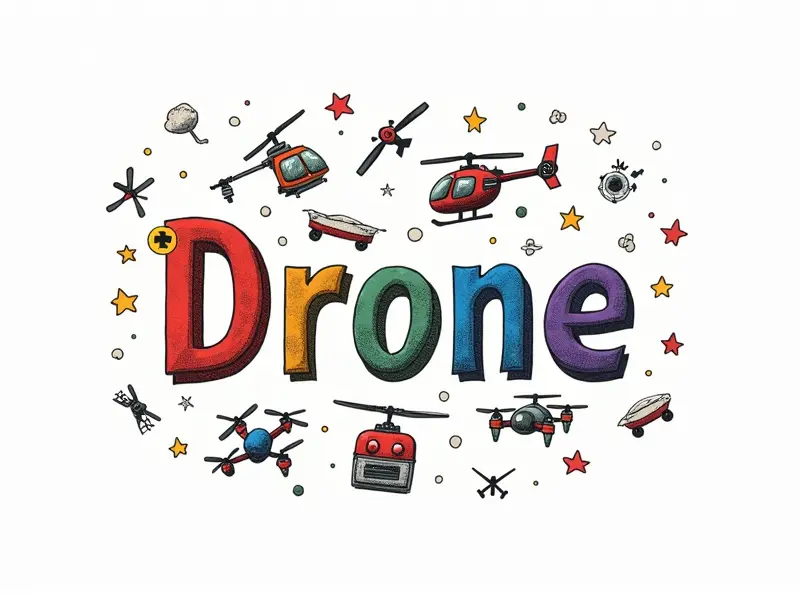What does PIDs stand for in RC?

Understanding PID Settings in RC Drones
PIDs, or Proportional Integral Derivative settings, are crucial for the performance and stability of remote control (RC) drones. These parameters play a pivotal role in ensuring that your drone maintains optimal flight characteristics, especially during high-speed maneuvers and complex aerobatics.
Mastering PID Tuning for RC Drones
Tuning PIDs is an art form that requires patience and practice. Properly tuned PIDs can significantly enhance the responsiveness and stability of your RC drone, making it more agile and easier to control during FPV racing or acrobatic flight.
PID Basics for RC Enthusiasts
Before diving into PID tuning, it's essential to understand what these parameters represent:
- Proportional (P): This setting determines the drone’s immediate response to a control input. A higher P value increases responsiveness but can also lead to instability if set too high.
- Integral (I): The I term addresses long-term stability by adjusting the drone's behavior over time, helping it maintain its position and orientation accurately.
- Derivative (D): This parameter predicts future errors based on current trends and helps to smooth out sudden changes in control inputs, reducing overshoot and oscillation.
Optimizing Flight with PID Settings
To optimize your RC drone’s flight performance:
- Analyze Your Drone's Behavior: Observe how your drone reacts to different PIDs during various maneuvers. Note any instability, sluggishness, or overshooting.
- Start with Basic Tuning: Begin by setting a moderate P value and gradually increase it until you notice the desired responsiveness without excessive oscillation.
- Tune I and D Carefully: Adjust the Integral term to improve long-term stability, and fine-tune the Derivative term to reduce overshoot and smooth out transitions.
Why PIDs Matter in FPV Racing Drones
In the high-stakes world of FPV racing, every millisecond counts. Properly tuned PIDs can make the difference between winning and losing by ensuring that your drone reacts quickly to control inputs while maintaining stability during sharp turns and rapid accelerations.
The Role of PIDs in RC Helicopters
For RC helicopter pilots, PIDs are equally important. They help maintain pitch, roll, and yaw stability, allowing for precise maneuvers and smooth flight patterns. Tuning these parameters is crucial to achieving the desired performance during aerobatics.
PID Explained: RC Quadcopter Control
Quadcopters rely heavily on PID settings for their control systems. Proper tuning ensures that each motor responds accurately to control inputs, maintaining stability and responsiveness throughout flight.
Tuning PIDs for Optimal RC Performance
To achieve optimal performance:
- Start with a Baseline Setting: Begin by using recommended PID values as a starting point. These can often be found in user manuals or online forums.
- Test and Adjust Gradually: Make small adjustments to each parameter one at a time, testing the drone's behavior after each change.
- Use Flight Data Logs: Analyze flight data logs to identify areas where your PIDs need fine-tuning. This can provide valuable insights into how your drone performs under different conditions.
Beginner's Guide to PIDs in RC
If you're new to PID tuning, start with these basic steps:
- Understand the Basics: Learn about the three components of a PID controller and their functions.
- Start Simple: Begin by testing your drone in stable conditions before moving on to more complex maneuvers.
- Seek Feedback: Join online communities or forums dedicated to RC flying. Experienced pilots can offer valuable advice and tips for tuning PIDs effectively.
Mastering PIDs: Tips for RC Pilots
To master PID tuning, follow these advanced tips:
- Practice Regularly: Consistent practice is key to mastering the nuances of PID tuning. Experiment with different settings and observe how they affect your drone’s performance.
- Use Advanced Tools: Consider using software tools designed for PID tuning, such as flight data analysis programs or specialized tuning apps.
- Document Your Progress: Keep detailed records of your tuning process and the results. This will help you refine your approach over time.
PID Parameters Guide for RC Flyers
The following table provides a general guideline for PID settings across various types of RC drones:
| Type of Drone | Recommended P Value | Recommended I Value | Recommended D Value |
|---|---|---|---|
| FPV Racing Quadcopter | 1.0 - 2.5 | 0.05 - 0.15 | 0.4 - 0.8 |
| Heli (3D Aerobatics) | 1.2 - 1.8 | 0.07 - 0.12 | 0.6 - 1.2 |
| Multirotor (General Use) | 1.5 - 2.0 | 0.08 - 0.14 | 0.3 - 0.7 |
In conclusion, mastering PID settings is essential for any RC enthusiast looking to optimize their drone’s performance and stability. By understanding the basics of PIDs and following a systematic approach to tuning, you can achieve remarkable results in both recreational flying and competitive racing scenarios.

